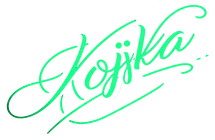Tubulent Timelines - A Time Traveling Outline
Turbulent Timelines Outline:
With the “Turbulent Timelines” outline, you’ll have a chance to write a book where readers will explore a richly imagined alternate history filled with divergent events, unique challenges, and the profound impact of choices made in an altered historical context.
Introduction to the Protagonist:
Introduce the protagonist, who lives in an alternate historical timeline, and provide insight into their life and background.
From Ordinary to Trapped:
Leaving their ordinary world is a shock, but the bigger shock is when they find themselves trapped in the alternate history.
Some Alternate World Building:
Describe the alternate historical setting, including the key divergence point from actual history, and the consequences of this change.
The Inciting Incident:
Present a significant event or circumstance in the alternate history that sets the stage for the story’s exploration of this altered reality.
The Quest for Understanding:
Establish the protagonist’s quest to understand the alternate history, uncover its secrets, or navigate its unique challenges.
Conflicts and Alliances:
Highlight conflicts, political dynamics, or alliances that are specific to the alternate historical timeline and shape the protagonist’s journey.
Diving into What Makes Things Different:
The protagonist embarks on a journey to explore the nuances and intricacies of the alternate historical timeline.
Alternate Figures and Characters:
Introduce key historical figures or characters specific to this alternate history, some of whom may have pivotal roles in the narrative.
Social and Cultural Differences:
Delve into the social norms, cultural differences, and technological advancements unique to the alternate history.
Big Challenges and Bigger Conflicts:
Highlight the challenges and conflicts that arise due to the altered historical context, whether they are personal, political, or societal.
The Point of No Return:
The protagonist faces a critical decision or historical event that will determine their role in shaping the course of the alternate history.
The Climactic Divergence:
The climax involves a pivotal moment or event that could further alter the alternate history, leading to unforeseen consequences.
Choices and Consequences:
Explore the choices made by the protagonist and other characters, as well as the potential consequences of these decisions on the alternate timeline.
The Unraveling:
Uncover hidden truths, conspiracies, or revelations that challenge the protagonist’s understanding of the alternate history.
The Reckoning:
A climactic confrontation or conflict related to the altered historical context takes place, forcing characters to confront their roles in shaping history.
Resolution of Reality:
Conclude the alternate history narrative with a resolution that addresses the fate of the alternate timeline and its impact on the characters.
Some Reflections and Growth:
The protagonist reflects on their journey through the alternate history, the lessons learned, and the personal growth experienced.
The Legacy of Change:
Highlight the lasting impact of the changes to the alternate history on the characters and the world they inhabit.
Lingering Alternate Questions:
End with hints of lingering questions or unresolved aspects of the altered timeline, suggesting that alternate history is a complex and evolving narrative.
Final Reflections:
Conclude with the protagonist’s final reflection on the power of choices, the malleability of history, and the enduring fascination with alternate timelines.



